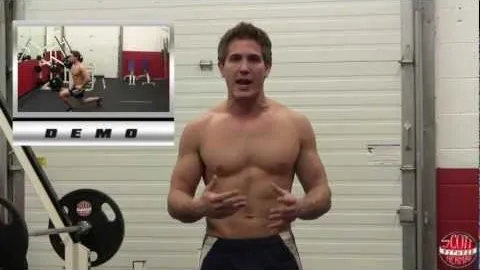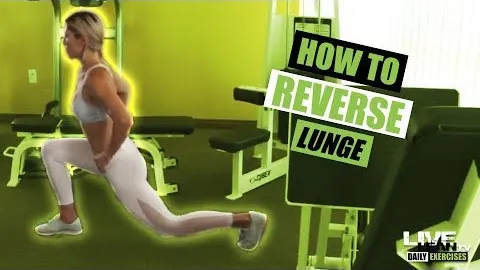


The bodyweight reverse lunge exercise is a great way to target and strengthen the muscles in your lower body, including your quadriceps, hamstrings, and glutes. It is a versatile exercise that can be performed anywhere, making it ideal for individuals who prefer to exercise at home or don't have access to a gym. In this article, we will discuss the proper form and technique for performing the bodyweight reverse lunge, its benefits, and variations to increase the difficulty as you progress.
To perform a bodyweight reverse lunge, follow these steps:
It is essential to maintain proper form throughout the exercise to prevent injury and maximize its benefits. Here are some tips to help you maintain correct form:
Incorporating bodyweight reverse lunges into your exercise routine offers numerous benefits, including:
1. Lower Body Strength: The primary muscles targeted during the bodyweight reverse lunge are the quadriceps, hamstrings, and glutes. Regularly performing this exercise helps to strengthen and tone these muscle groups, improving your lower body strength.
2. Stability and Balance: The bodyweight reverse lunge requires a degree of stability and balance as you step backward and lower your body. Consistently practicing this exercise can enhance your overall stability and balance, reducing the risk of falls and improving your performance in everyday activities.
3. Joint Mobility: The reverse lunge exercise promotes joint mobility, particularly in the hips, knees, and ankles. Flexibility and mobility in these areas are vital for maintaining proper movement patterns and preventing injuries.
4. Core Activation: Engaging your core muscles during the bodyweight reverse lunge helps to stabilize your spine and improve overall core strength. Strengthening your core is essential for proper posture and stability in other exercises and daily activities.
5. Calorie Burn: The bodyweight reverse lunge is a compound exercise that engages multiple muscle groups simultaneously, leading to increased calorie burn. Incorporating this exercise into your routine can help contribute to weight loss and improve cardiovascular fitness.
Once you have mastered the basic bodyweight reverse lunge, you can gradually increase the difficulty by incorporating variations:
1. Weighted Reverse Lunge: Hold dumbbells or kettlebells in each hand while performing the reverse lunge. The added resistance will intensify the workout and further challenge your muscles.
2. Plyometric Reverse Lunge: Instead of stepping back, explosively jump into the reverse lunge position. This variation adds a cardiovascular component and increases the demand on your leg muscles.
3. Walking Reverse Lunge: Perform the reverse lunge while continuously stepping backward, alternating between legs. This variation adds an additional balance and coordination challenge.
4. Bulgarian Split Squat: Rest the top of your rear foot on an elevated surface, such as a bench or step, while performing the reverse lunge motion. This variation increases the range of motion and places more emphasis on the front leg.
Remember to gradually incorporate these variations into your workout routine to avoid overexertion and ensure proper technique.
The bodyweight reverse lunge exercise is an effective and accessible way to strengthen your lower body. By incorporating this exercise into your routine, you can improve muscle strength, joint mobility, stability, and balance. Furthermore, by adding progressions as you become more proficient, you can continue to challenge yourself and reap the benefits. So, give the bodyweight reverse lunge a try and experience the transformation of your lower body strength.
If you're looking for a gym, fitness club or yoga studio, you've come to the right place.
You can find information about gyms in your area. Browse catalog of gyms and find gyms with classes which are you looking for.
On gym page you can find simple information like address, phone or website. You can find list of available classes. You can check availability of personal training or small group classes. On place page you can also see information about open hours.
You can find gyms near you with amenities, courts, studios and equipments.
Use our map to find gym at your city or district.
In Gym Navigator you can find list of exercises with movies for many body parts.
You can browse exercises catalog and find exercises the best of you.
You can also find exercises grouped into workout plans, which you can use to improve you body. Each routine show you exercises one by one and give you possibility to count you progress and count down rest time.